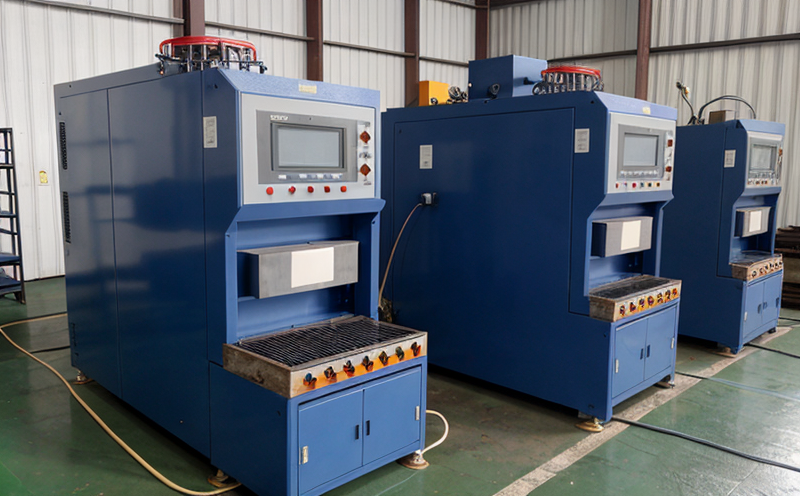NF EN ISO 3451 Plastics Ash Content Testing
Plastic materials are essential components in many industrial manufacturing processes. They must meet specific quality standards to ensure their performance, safety, and compatibility with other elements within the production cycle. One of the key parameters that defines the quality of plastics is their ash content.
The NF EN ISO 3451 standard provides a robust framework for determining the ash content in thermoplastic materials through thermal decomposition at controlled temperatures. This procedure helps manufacturers and processors to ensure compliance with international standards, thereby maintaining product integrity and reliability. The test method described in this standard is widely used across various sectors including automotive, electronics, packaging, and consumer goods.
The testing process involves heating the sample under specified conditions until all volatile components have been driven off, leaving behind only the non-volatile residue. This residue constitutes the ash content, which can provide insights into the purity of the plastic material. Understanding this value is crucial for quality control departments as it impacts various properties such as thermal stability, chemical resistance, and overall performance.
The procedure outlined in NF EN ISO 3451 ensures consistency and accuracy by specifying exact temperatures, durations, atmospheres (such as nitrogen or air), and equipment requirements. Compliance with this standard is not only beneficial for regulatory purposes but also enhances brand reputation among consumers who value transparency regarding product composition.
Compliance with NF EN ISO 3451 standards helps manufacturers meet international regulations set by organizations like the European Union (EU) and ensures that products can be exported seamlessly across borders without facing compliance challenges. For instance, industries involved in manufacturing automotive components or medical devices often require stringent quality assurance measures which include accurate ash content analysis.
In summary, NF EN ISO 3451 Plastics Ash Content Testing is a vital tool for industrial manufacturers and processors aiming to maintain high standards of product quality. By adhering to this standard, companies can demonstrate their commitment to excellence in material selection and production processes while also ensuring they stay ahead of evolving industry trends.
Why It Matters
The importance of NF EN ISO 3451 Plastics Ash Content Testing cannot be overstated, especially within the context of industrial manufacturing and processing. Understanding the ash content in thermoplastic materials is crucial for several reasons:
- Ensuring Material Purity: Accurate measurement of ash content allows manufacturers to identify any impurities present in their raw materials. This information is vital because even trace amounts of contaminants can significantly affect the quality and performance of end products.
- Prediction of Performance: The level of ash can give indications about potential issues related to thermal stability, chemical resistance, mechanical strength, and color consistency—all critical factors in determining the suitability of a plastic material for specific applications.
- Enhancing Product Integrity: By ensuring that raw materials meet specified purity levels, companies can enhance the overall integrity of their final products. This leads to improved reliability and longer product lifecycles, which are particularly important in high-stress environments like automotive or aerospace manufacturing.
- Regulatory Compliance: Many industries operate under strict regulatory frameworks that mandate adherence to certain quality metrics for raw materials. Meeting these requirements through accurate ash content testing is essential for maintaining compliance and avoiding potential legal issues.
Benefits
- Improved Product Quality: By accurately measuring ash content, manufacturers can eliminate impurities that could otherwise affect the quality and performance of their products.
- Better Process Control: Consistent results from NF EN ISO 3451 tests help operators make informed decisions regarding process adjustments necessary to maintain optimal production conditions.
- Enhanced Customer Satisfaction: Providing consistent, high-quality raw materials contributes directly to customer satisfaction and loyalty. Meeting or exceeding expectations builds a strong reputation in the market.
- Cost Efficiency: Early detection of impurities through rigorous testing helps avoid costly rejections or recalls later down the line.
Customer Impact and Satisfaction
Implementing NF EN ISO 3451 Plastics Ash Content Testing has numerous positive impacts on customers, including:
Prompt Identification of Issues: Early identification of potential problems allows for quick resolution, minimizing disruptions in supply chains.
Informed Decision-Making: Accurate data enables better decision-making processes related to supplier selection and contract negotiation.





